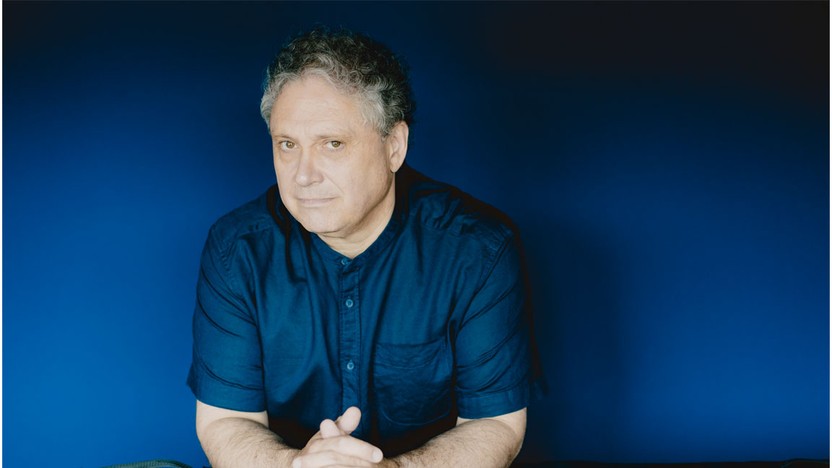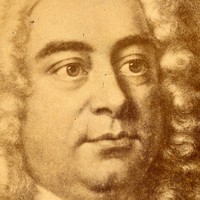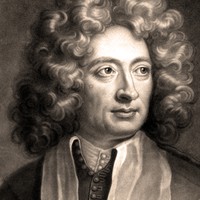Richard Egarr Plays Handel and Corelli



George Frideric Handel fell in love with opera as a teenager, and from the time of his first job playing violin in the opera orchestra in Hamburg, he dreamed of composing his own. He moved for a time to Italy, the birthplace and epicenter of opera, and he managed to parlay his connections with the heir to the throne of England — the German prince who would soon become King George I — to write the first Italian opera composed expressly for London. Handel ruled London’s opera scene for decades as both a composer and impresario, but gradually tastes changed, and he ran headlong into an intractable problem: English audiences had soured on an art form they couldn’t understand.
Ever a shrewd businessman, Handel adjusted by testing different ways of presenting dramatic works sung in English. In the process, he invented a new form of oratorio, which combined solo voices, choir and orchestra to dramatize a subject or story on a concert stage, without sets or costumes. He debuted two new English oratorios during his 1738-39 season, starting with Saul, a collaboration with librettist Charles Jennens depicting the rivalry between Israel’s first king and his successor, David.
Borrowing from the conventions of opera, Saul begins with an overture, or sinfonia as they called it in Italy. The three-part structure, organized fast-slow-fast, was the forerunner to the symphony, and this example is stuffed with exceptionally colorful orchestral music, including prominent parts for oboes and the organ that Handel commissioned for the production, designed to give him a better view of the orchestra and stage.
Aaron Grad ©2024

Arcangelo Corelli, an influential violinist and teacher in Rome, mostly composed music for his own instrument. He wrote sonatas for violin and basso continuo — a shared bass line usually played by cello along with harpsichord or other accompanying instruments — and he also composed for two violins and basso continuo, a genre known as the trio sonata.
The two violins and cello of the trio sonata became the nucleus of a format pioneered by Corelli, the concerto grosso, which featured those three instruments playing within and against a larger body of strings. Long before 1714, when twelve of these concertos were published posthumously as Corelli’s Opus 6, his innovative scores were influencing composers around Europe, spread by visitors who brought them back from Italy. This Concerto Grosso in D Major shows off Corelli’s spectacular range of instrumental colors, from the warm tutti passages for the united ensemble to the brilliant soli escapades full of quick counterpoint and high-flying virtuosity.
Aaron Grad ©2024

George Frideric Handel’s shift from Italian opera to English oratorio moved him away from a model where the specific singers were the biggest draw (with the best of them brought in from Italy, especially the castrati) toward an emphasis on the storytelling and the music itself. Handel also recognized that his own star power as a performer could draw a crowd, and to boost his theater revenues he began playing concertos during the intermissions of his oratorios, using the same compact organ from which he directed the orchestra. Handel’s publisher collected and printed some of these concertos during Handel’s lifetime, and he gathered six more together to release as a posthumous collection in 1761.
This Organ Concerto in D Minor was cobbled together from various sources, probably by the publisher. Such a practice would have been quite familiar to Handel, who borrowed from himself and others constantly, with none of the preciousness we now assign to compositions as singular, original creations. The first movement came from an earlier concerto for two organs, and the last movement matches music from an earlier concerto grosso (Op. 3, No. 6). The third movement isn’t written out at all, just an indication that the organist should improvise. And the lively second movement is plagiarized from Georg Philipp Telemann, copying a theme from an Air in the fellow German’s Musique de table. Just as jazz musicians today use “standards” from the Great American Songbook as scaffolding for their own improvisations, Handel took whatever good music was at hand and let his fast-moving fingers do the rest.
Aaron Grad ©2024

As part of his 1739-40 season at Lincoln’s Inn Fields Theatre, George Frideric Handel introduced L’Allegro, il Penseroso ed il Moderato, which was, its Italian title notwithstanding, an English ode, a format related to the oratorios he had been pioneering. At the debut performance on February 27, 1740, he began the show with an organ concerto he had completed ten days earlier.
This concerto in B-flat, collected as the first of the set printed posthumously as Opus 7, sets the stage with Handel and his organ in a heroic posture, exchanging phrases with the entire orchestra. The whole concerto succeeds in placing the organ in the brightest spotlight possible, using its versatile array of sounds to show it off as an orchestra unto itself, filling the sonic space just as effectively as the oboes, strings and harpsichord accompanying it. Even amid the quietude of the Largo e piano third movement, the organ’s infinite sustain adds another dimension of wonder, stretching the drawn-out melody across impossibly long phrases.
Aaron Grad ©2024

The Concerto Grosso in F Major, printed second in the posthumous collection of Arcangelo Corelli’s Opus 6, exemplifies the Roman violinist’s exceptionally supple and inventive approach to the form. By tradition, its four movements should alternate between slow and fast tempos, the standard format for abstract music that could be played in churches. But in the span of about four minutes, this concerto’s first movement goes far afield: it starts off lively and declamatory; then it breaks into some imitative counterpoint in a brisk Allegro tempo; then without warning the fast F-major music becomes a melancholy F-minor Adagio; then that initial declamatory theme gets converted into a transitional passage; then the fast counterpoint comes back in a different key; then it slows for an unresolved cadence that could be the end; then the three soloists introduce a whole new sound, in a slower tempo anchored by a consoling, down-stepping bass line; then the voices trade so that the violin melody becomes the bass line and the slow descents become the theme, voiced by full strings; then just as it settles into a final cadence, one more hint of F-minor tinges the sweet resolution in F-major. There is simply no autopilot in Corelli’s music, for performers or listeners, and that keeps these foundational concertos just as fresh as they were more than 300 years ago.
Aaron Grad ©2024

The new organ that George Frideric Handel commissioned and installed in the King’s Theatre for Saul was back in action a few months later for the debut of his next Oratorio in English, Israel in Egypt. During an intermission, he also introduced a new organ concerto he had completed just two days earlier. In his usual spirit of making efficient use of whatever good music was at hand, he adapted the first and last movements from a recent trio sonata he had written and published within his Opus 5 set. He also left some details to be worked out on the fly, with the organ improvising a transition between the second and third movements. The new music he wrote for the second movement was the most exciting and attention-grabbing, with its birdsong imitations presented in counterpoint, earning this concerto its avian nickname. True to form, this material soon re-appeared in a concerto grosso that became part of Handel’s Opus 6.
Aaron Grad ©2024
Get driving directions and find nearby parking.
Find dining options close to the venue.
View seating charts to find out where you'll be seating.
Get driving directions and find nearby parking.
Find dining options close to the venue.
View seating charts to find out where you'll be seating.
